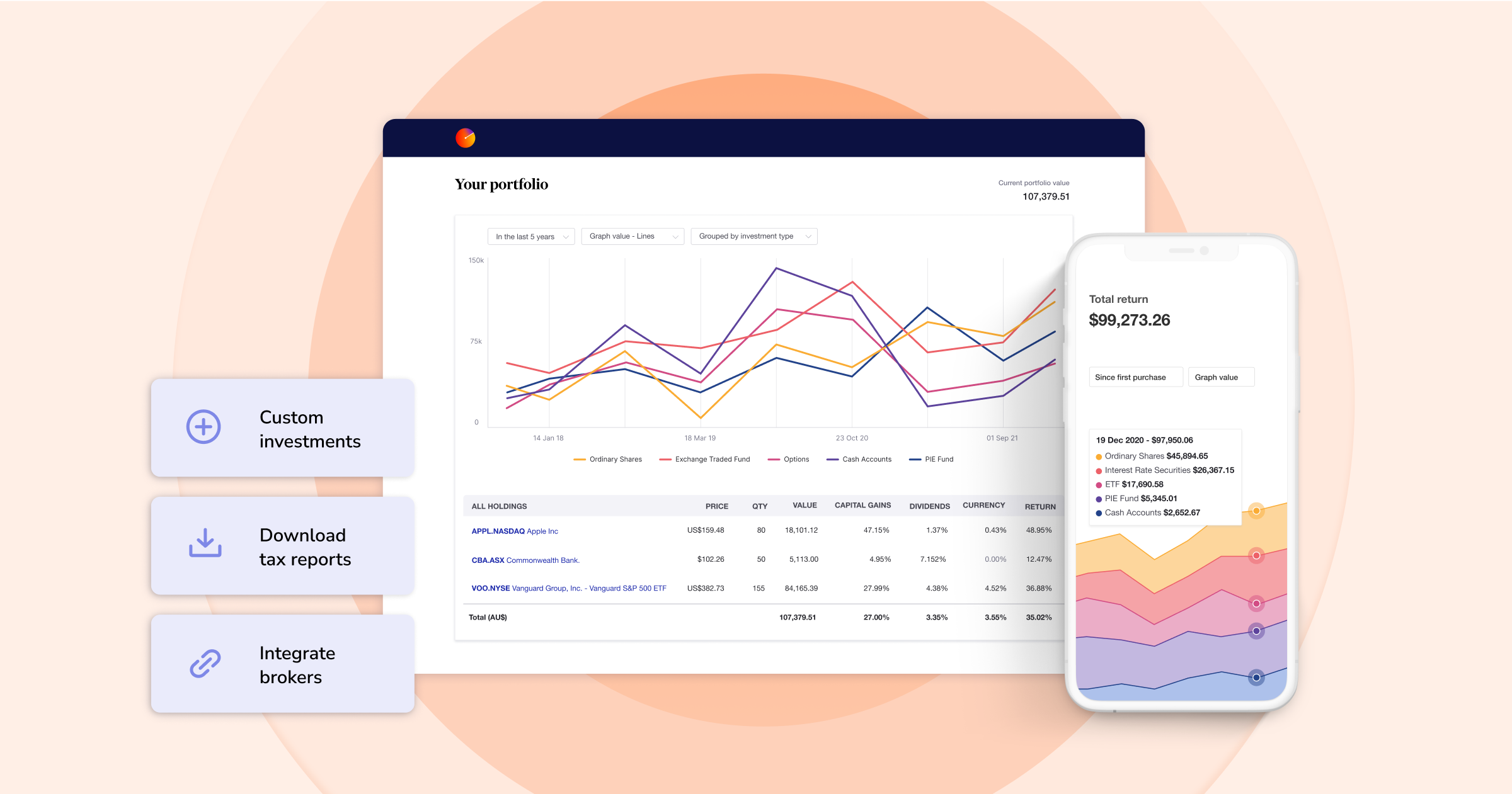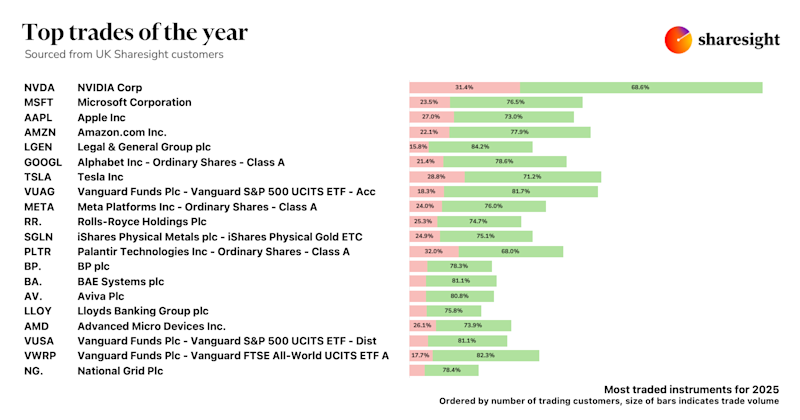4 things investors need to know about dividend investing
As a dividend investor, it's crucial to stay on top of your portfolio, especially if you are reliant on dividends as an income source. This becomes even more important in times of economic volatility, where dividend investors must refine their portfolio to ensure they are in the best possible position to ride out a downturn. To do this, investors will need to carefully manage their investments by tracking dividends and ensuring they are accurately calculating the tax implications of any dividend income, including franked dividends.

Dividend investing: No longer a safe-haven
Dividend investing has long been a favourite of Australian investors. It’s a simple concept: Pick some blue chip stocks with regular dividend payments that include franking credits, hold onto them and collect the payments. While this generally a good strategy when the economy is going strong, it can come undone in the midst of an economic downturn.
For example, while the big banks have historically been associated with steady, sizeable dividend payments, in 2020 the Australian Prudential Regulatory Authority (APRA) imposed a 50% cap on dividend payout ratios for the year’s second-half earnings. Not only were investors looking at reduced dividend payments in general, but many companies decided to forgo dividend payments altogether.
In cases like the above, investors could benefit from a portfolio tracking solution that allows them to keep up-to-date on changes in their dividend payments, while also allowing them to forecast their future income based on their current investment holdings.
Keeping track of cash from dividends
Investors with large, diversified portfolios will find that keeping track of where dividends are coming from and how they impact the portfolio can be an admin nightmare.
Listed companies, exchange-traded funds (ETFs) and managed funds outsource the responsibility of tracking who owns shares and who is paid dividends to share registries, of which there are six in Australia. This means that to get an accurate record of dividends received across an investment portfolio, investors will often need to gather dividend data from the websites of multiple registries or pour over mailed dividend statements for each holding.
In the best-case scenario, investors may have their dividends deposited into the same account they use for brokerage. However, the broker has no visibility on the source of this cash, so they won’t be able to calculate the dividend yield from it.
Investors can do this manually in a spreadsheet, but it is time-consuming and becomes increasingly complex as the portfolio grows. Using a dedicated software solution that automates dividend tracking can take the time and effort out of keeping up to date, and gives investors an accurate picture of their dividend yield and portfolio return.
Dividends and their tax implications
Keeping track of the income from dividends is one thing, but for many investors, particularly those with self-managed superannuation funds (SMSFs), it’s crucial to understand the impact of franking credits on dividend income and how this affects tax returns. Dividends aren’t just classified as taxable income either. Some can actually change your cost base and need to be recorded properly.
In trying to calculate the tax implications of franking credits, looking at the bank account the share registry deposits dividends into will be of little help, because it only lists the net amount paid. Going to the share registry for information is a good start, but the registries fall short in two ways: For one thing, you will likely still need to rely on multiple registries to compile a portfolio-wide tax picture; and secondly, they will sometimes only provide you with the most recent financial year’s data for free, charging you a fee if you need access to information from previous years.
To avoid this long-winded and messy process, investors should seek a portfolio tool that automatically records franking credits and allows them to simply calculate the taxable income on their investments. This will become infinitely valuable at tax time, saving investors the headache of chasing records and trying to ensure accuracy.
The impact of dividend reinvestment
Some share registries will allow investors to automatically reinvest their dividends in the companies that issue them, which is a good way to build wealth in a portfolio without encountering brokerage fees. However, DRPs can create an added layer of complexity when trying to calculate the true return of your portfolio.
Because the DRP is managed by the share registry, brokers have no visibility into dividends that are reinvested. This means the investor must keep track of this. In addition, when dividends are reinvested, shares are bought at whatever the market price is at the time (sometimes with a discount). This means that the cost base and the amount invested is constantly changing and will have tax implications when calculating capital gains tax (CGT), should you ever decide to sell the shares. It also makes it difficult to calculate the true performance of a portfolio, as any return calculations are reliant on the cost base.
Once again, this would require quite some time and effort to track via a spreadsheet, especially as this is only one of many metrics an investor needs to track if they want to effectively manage an SMSF or track the returns of a dividend investing strategy. An automated solution could make this process vastly more efficient and give clarity on a portfolio’s true returns.
Dividends can be an investor’s best friend with Sharesight
Done manually, dividend tracking can be a tricky and time-consuming process. With Sharesight’s portfolio tracker, however, dividends and franking credits are recorded automatically and investors can easily track changes in future income as well as the impact of DRPs. With Sharesight you can also:
-
Track all of your investments in one place, including stocks, mutual funds, property and even cryptocurrency
-
Run powerful reports built for investors, such as performance, portfolio diversity, contribution analysis, multi-period, multi-currency valuation and future income (upcoming dividends)
-
See the true picture of your investment performance, including the impact of brokerage fees, dividends, and capital gains with Sharesight’s annualised performance calculation methodology
-
Easily share access of your portfolio with family members, your accountant or other financial professionals so they can see the same picture of your investments as you do
Sign up for a free Sharesight account to start tracking your investments (and tax) today.

FURTHER READING

Sharesight users' top trades – December 2025
Welcome to the December 2025 edition of Sharesight’s monthly trading snapshot, where we look at the top buy and sell trades by Sharesight users over the month.

Top trades by UK Sharesight users in 2025
Welcome to the 2025 edition of our UK trading snapshot, where dive into this year’s top trades by the Sharesight userbase.

Top trades by global Sharesight users in 2025
Welcome to the 2025 edition of our global trading snapshot, where we dive into this year’s top trades by Sharesight users around the world.